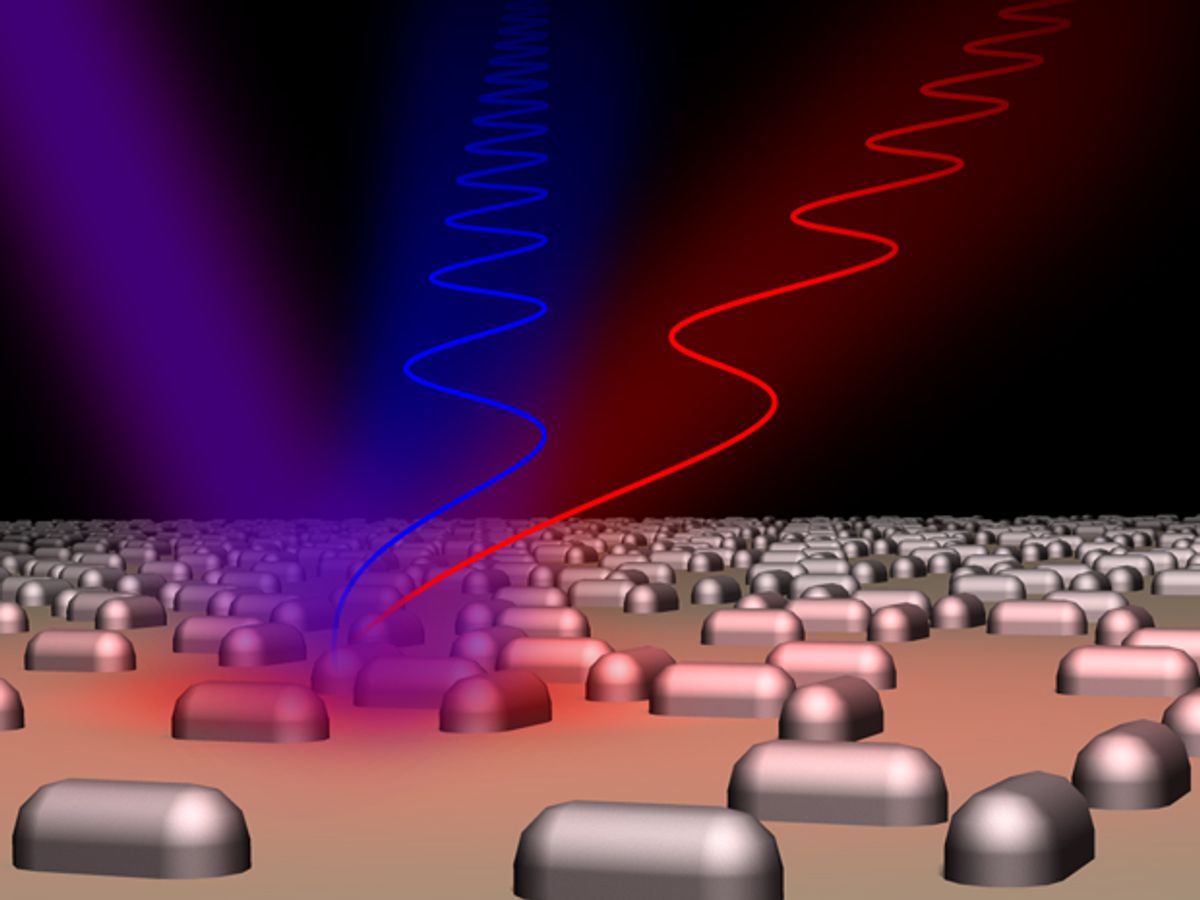By exploiting the same properties of nanoparticles that made the Lycurgus Cup change colors depending on the light hitting it, researchers at the University of Cambridge have used nanoparticles to create holograms that could store twice as much information as today’s digital optical devices.
In research published in the journal Proceedings of the National Academy of Sciences, the UK team used a thin film of silver nanoparticles to produce multicolor holograms.The nanoparticles create interference that allows the holograms to go beyond the normal limits of diffraction.
The nanoparticles are able to go beyond the normal diffraction limits by exploiting plasmonics, which takes advantage of oscillations in the density of electrons that are generated when photons hit a metal surface. Plasmonics has a number of potential applications, including transmitting data on computer chips and producing high-resolution lithography.
“This technology will lead to a new range of applications in the area of photonics, as conventional optical components simply cannot achieve this kind of functionality,” said Yunuen Montelongo, a PhD student from the Cambridge engineering department, who led the research, in a press release. “The potential of this technology will be realized when they are mass produced and integrated into the next generation of ultra-thin consumer electronics.”
In the device, each nanoparticle scatters light into varying colors depending on its size and shape. The scattered light from all the nanoparticles interacts and combines with each other to produce an image.
Among some of the unusual effects that can be produced by this device is its ability to display different images when illuminated with different color light and its ability to produce a multi-color image when multiple light sources are focused on it.
“This hologram may find a wide range of applications in the area of displays, optical data storage, and sensors,” said PhD student Calum Williams, a co-author of the paper. “However, scalable approaches are needed to fulfill the potential of this technology.”
Dexter Johnson is a contributing editor at IEEE Spectrum, with a focus on nanotechnology.



